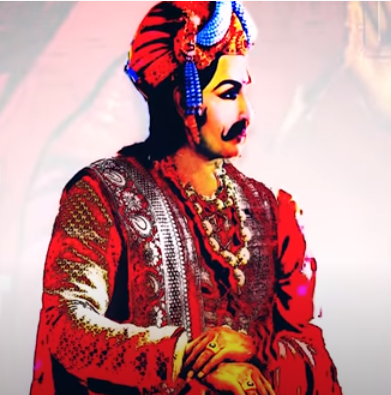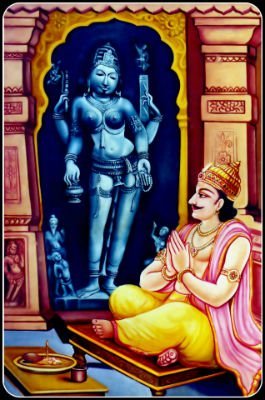Why Historians Believe Raja bhoj killed Mahmud Gazni, with facts and evidence


Most of the people still don’t believe that Raja Bhoj was the King who Killed Mahmud of Gazni, this ignited the urgency to prove the claims of Historians with facts, evidence, and arguments that sound more rational and firmly establish their viewpoint that Raja Bhoj killed Mahmud of Ghazni. After the Desecration of Somnath temple, the army of Ghazni was moving very fast as they were expecting a heavy retaliation from Hindu kings, Goga Ji Maharaj with his handful of Hindu Soldiers,obstructed the path of Ghazni, the fierce battle took place between them in which Goga Ji Maharaj attained martyrdom, Ghazni then thought that if he took the torturous Land route to reach Kabul via Rajasthan then he would have to face the strong resistance of Rajputs of Ajmer whom he had defeated in the past and if he stays in Gujarat then nearby Hindu Kings would soon wage armed warfare against him, so he chooses Arabian sea route to reach the coast of Sindh and from there he could easily reach Kabul via Multan, when Jats of Sindh came to know that Mahmud of Ghazni is arriving in Sindh, they got mobilized very quickly and attacked army of Ghazni, the battle took place at some distance from the banks of Indus River, Jats though lost the battle but they were successful in freeing the women and children from Ghazni’s army, whom the latter have made them as their slave.
Jats lost the battle as they were outnumbered in manpower and also by the use of treacherous means of Ghazni, due to the frequent two battles that took place after demolishing Somnath, the army of Ghazni got exhausted and tired, Ghazni also became very weak and feeble, when spies of Raja Bhoj told him that Ghazni has hidden in the deserts of Sindh, he ordered his army to march to Sindh and from there they reach Kabul where they killed Ghazni in the battle. This was the whole story of the killing of Mahmud of Ghazni
Islamic Historians fabricated a false story that Gazni died due to tuberculosis so that they could hide the terrible and humiliating defeat of Mahmud Gazni, Hindu Historians believe that he was killed by Raja Bhoj and they cite many facts and arguments to prove it which sounds very reasonable. Firstly if Gazni wasn’t killed by Raja Bhoj then why he never came back to raid India, Somnath was destroyed in 1026-27 and as per Islamic records he died in 1030, this seems to be suspicious that despite his most of booties, women were looted in 16th invasion, he still preferred not to invade India, this is contrary to the nature of Gazni, the reality is that he was killed in the battle by Raja Bhoj. see this
Secondly, Mahmud of Gazni also attacked Kashmir but was defeated, he came back again but again he lost to the King of Kashmir, this proves that Gazni even after getting beaten in the battle, he still carried out attacks on the enemy, this was in contrast to his last Somnath invasion since he never came back to India after that invasion. Read this
Thirdly, after this battle and battle of Bahraich in which Raja Bhoj also took part to kill the nephew of Mahmud of Ghazni, Salar Masud, then for the upcoming 160 years no Islamic invader stepped in India to kill Hindus, and attacks from the northwest were stopped. This has happened before also when Bappa Rawal in the 7th century defeated Arabs and gave them such a crushing defeat that Islamic invaders never came to India for nearly 300 years, Same is here in Raja Bhoj’s case as the aftermath of both victories looks very similar. Most of the Islamic Historians have refrained themselves from telling about the triumph of Bappa Rawal over Arabs, same is with the victory of Raja Bhoj, the credibility of Islamic Historians was always questionable.
Fourthly, this battle is still very famous among the people of his Kingdom, they still regard him as their deity and in many local fables, concerts on Raja Bhoj, this execution of Mahmud of Ghazni is told with very charm and the native people of Somnath also acknowledge this battle as exceptional and of distinction that rejuvenated the glory of Somnath temple by Killing the sinner Mahmud Of Ghazni. Look at this
Some of the historical books also talk about the battle of Mahmud of Ghazni and Raja Bhoj, one such book is EARLY HISTORY OF INDIA, SECOND EDITION, PG 410-411, this book claims that Raja Bhoj fought battle with Mahmud of Ghazni but that battle is forgotten, there is another book called RAJA BHOJ, PG 80-82, which also describes that Raja Bhoj was standing with his army to fight with him, but the coward Ghaznvi fled to Sindh. This book also states that Raja Bhoj also defeated Arabs and Islamic invaders in Kandhar, Afghanistan on Page 240-250. In the Bhavishya Puran also his conquest of Afghanistan has been described in detail.
Fifthly, after the break of 160 years, when these Islamic invaders again raided India then they exclusively attacked the Malwa Kingdom and destroyed all the lakes and temples made by him, the very famous Bhojshala which was built by Raja Bhoj was decimated by Islamic Invaders, no other Kingdom at that time faced so much attack from Northwest except Malwa kingdom, the reason for singling out Malwa for the attack was that this was the Kingdom of Raja Bhoj who killed their Mahmud of Ghazni whom they still praise as Idol breaker, they were driven by the 160-year-old antagonism, so they carried out the constant attack on Malwa. There is one myth which is widespread that Gazni defeated Jats two times in a row during 1026-27, the reality is that battle was fought only once in which Jats sacrificed themself to protect the honor of women, they though lost the battle but saved countless women which were sent away from the battlefield i.e on the banks of the Indus river, where women took boats and went away. The most key aspect was that Raja Bhoj had already taken an oath to kill Ghazni and his descendants, he was a man of words, therefore he marched to Sindh and Kabul to kill Ghazni and fulfilled his vows that he has told to the people of Somnath and his Kingdom. know this
DISCLAIMER: The author is solely responsible for the views expressed in this article. The author carries the responsibility for citing and/or licensing of images utilized within the text.
